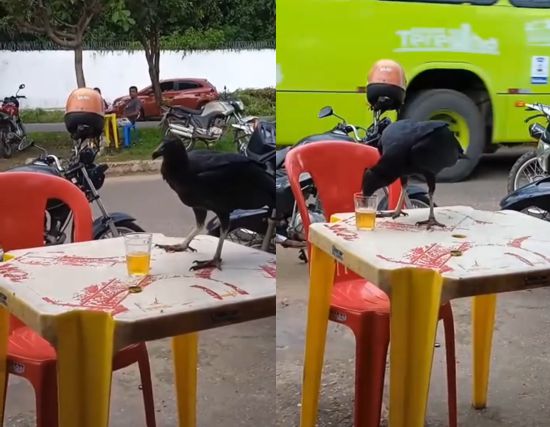Porn Discounts Sex Games Porn Games Juegos XXX Hentai Games PornStar Games 3D Porn Tantaly Sex Doll Cupsland Sextoy Live Cams
Live Sex Free Live Sex Free Sex Games Páginas Porno Rose Toy Free OnlyFans Celebrity Fappening Celebrity Sex Videos TikTok Porn Best OnlyFans
Live Sex Free Live Sex Free Sex Games Páginas Porno Rose Toy Free OnlyFans Celebrity Fappening Celebrity Sex Videos TikTok Porn Best OnlyFans
Published on 2025/05/02
10K GORILLAS VS 1M MEN
There’s one thing men haven’t lost since the dawn of time: the delusion that we can take on anything. And I mean anything. “A lion? I could take him.” “A bear? Easy. I’d jump on its back and choke it out.” That kind of nonsense has been floating around the internet for years, half-joking, half fueled by raw testosterone that doesn’t know the difference between confidence and a death wish.And naturally, this macho overconfidence led to the inevitable: a computer simulation pitting one million men against 10,000 gorillas. Yep, ten thousand. And the result? A total bloodbath. The entire human army gets wiped out. Not a single man survives. In return, they manage to kill only 14 gorillas. Fourteen. The rest just keep strolling around like someone threw confetti at them. That simulation is what kicked off the debate. Now it’s not just “I could probably take one if I focused”—now it’s “Could 100 guys take on a single gorilla?”
So, let’s talk about the enemy. A gorilla is basically a living battering ram. Its arms are two moving tree trunks. Its chest is a damn wall. It doesn’t run—it charges. It doesn’t punch—it slams. A full-grown male can lift somewhere between 1,500 and 1,800 pounds like it’s nothing. Its bite force hits over 1,300 PSI. Its skull is built like a natural helmet, reinforced with bone ridges that anchor ridiculous chewing muscles. These things are designed to crack branches but could just as easily turn your arm into pulp. Their bones are thicker, denser, built to tank hits and keep going. And their nervous system doesn’t hesitate—they react with pure, primal aggression.
Now, let’s take a good look at the humans. What do we bring to the table? Smarts, coordination… and not much else. In a barehanded brawl, we’re embarrassingly unfit. No claws, no fangs. Our skin tears easily. Our muscles, unless seriously trained, are more aesthetic than functional. We’re slow compared to any wild animal. We tire fast. Our bones snap under pressure. We get confused when we’re hurt. And worst of all? We panic. That kind of fear helps when you're at the office or waiting in traffic—not so much when a 440-pound monster is charging straight at you without a second thought.
Our big evolutionary strength has always been planning, strategy, tools. But in a raw, no-weapons fight? We’re toast. We’re soft, we’re fragile, and our reflexes aren’t built for chaos. Even our precious brain doesn’t mean much when everything comes down to half-second reactions and no room for error.
Now sure, maybe 100 guys could come up with something. A coordinated attack, maybe. Split into groups. Bait the gorilla from one side, jump it from behind, overwhelm it with numbers. Trip it up, pin it down, pile on. But let’s be real: that requires perfect teamwork. Nobody freezing up. Nobody backing off. No one getting launched into the air and causing the rest to freak out. One mistake, one hesitation—and the gorilla takes control. And once it takes control, it doesn’t let go.
|
➡️ Let's do real, be real with Tantaly, the sex doll torso leader |
And here’s the worst part: even if they manage to bring it down… how do you kill it? Strangle it? Good luck wrapping your arms around something six times stronger than you. Smash its head? With what? How long would that even take? How many guys would have to hold it down? How many would die in the process? This isn’t like wrestling a dude. There’s no off switch. Gorillas are built by nature to survive hell.
The whole conversation, as ridiculous as it is, forces us to face something we don’t like to admit: without weapons, without tools, without tech… we’re just meat with a brain. And in the wild, if you don’t have time to think, the gorilla wins. No speeches, no tactics. Just instinct, muscle, and terror. The gorilla doesn’t hesitate. It acts. And in that arena, we’re just visiting.
So yeah, maybe 100 guys could bring one down. Maybe. With insane coordination, a bit of luck, and a mountain of casualties. But it wouldn’t be a win. It’d be a massacre with a participation trophy. A hollow victory. And let’s be honest—no one should want to see that fight. But you know damn well we’d all watch it.
ExtraBall by david
Today’s slow-motion pick.
ExtraBall2
(Clicking on these links daily you support ALRNCN's work. They're collaborators or sponsors and, by visiting their sites, they like us even more)











SHEPHERD DOG
Shepherd dogs are animals that help men herd sheep, goats and other farm animals. There are two kinds of shepherd dogs, guard dogs, which are supposed to protect herds from the attack of wolves and other predators, and the dogs that only dedicate to guiding and controlling the herd in their routes.

# Watch video
ExtraBall by walter
AI Stuff
ExtraBall2
(Clicking on these links daily you support ALRNCN's work. These are collaborations or sponsorships and, by visiting their sites, they like us even more)











ASSISTANCE DOGS
Assistance dogs are trained companions who enhance the lives of people with physical, sensory, or mental disabilities. They help individuals move safely, alert them to sounds or dangers, retrieve objects, open doors, provide comfort during stressful moments, and detect medical changes like seizures or dangerous glucose levels. Additionally, they offer emotional support, reduce isolation, and boost their owners' self-esteem.
Through rigorous training, they become true heroes, enabling a more independent and fulfilling life.

# Watch Videos
ExtraBall by walter
The slow-motion moment of the day.
ExtraBall2
(Clicking on these links daily you support ALRNCN's work. They're collaborators or sponsors and, by visiting their sites, they like us even more)


























RECOMMENDED SITES
 Add your site
Add your site
- Motherless
- Entensity
- BoobieBlog
- Babes & Bitches
- Erotic Beauties
- celeb-stalker.com
- sweetlicious
- Candid Teens
- drunkenstepfather
 Add your site
Add your sitePorn Discount
💩 CrazyShit
🤪 eFukt
NudeChatGirls
👉🍑 Top XXX Pictures
Bingo Porno
Best Porn Blog Sites
Sex Games
Real Amateur Porn
MrPornGeek
CamBB.xxx
ChatSex.xxx
Comepollas
PornScn Free Porno
AI Girlfriend App

















WAKING UP WITH KISSES AND LOTS OF LOVE
In a world where we often wake up to the sound of an alarm, stressed by daily obligations, waking up full of love and kisses is a luxury that invites us to pause, even for a moment, and appreciate what truly matters. It reminds us that, above all, we are made to love and be loved.

# Watch Video
ExtraBall
If it hurt me just watching it, I can't imagine what he went through.
ExtraBall2
(Clicking on these links daily you support ALRNCN's work. They're collaborators or sponsors and, by visiting their sites, they like us even more)












FUSION
What kind of animal would we get if we mixed a gorilla with an elephant? How about a shark and a rhino? And what do you think of a fusion between a horse and a scorpion? Well, let’s find out.

# Watch videos
ExtraBall
Impossible to contain them.
ExtraBall2
(Clicking on these links daily you support ALRNCN's work. They're collaborators or sponsors and, by visiting their sites, they like us even more)












Contact
You can tell us whatever you want via email: [email protected]
If you prefer, you can use this contact form:
If you prefer, you can use this contact form:






IF YOU DRINK, DON'T FLY
One beer, another, the last one, and before you know it, you're carrying a drunkenness so heavy it's like you're not fit to embark on a migratory journey.

# Watch video
ExtraBall
IShowSpeed gets into a barking fight with a dog and loses.
ExtraBall2
(Clicking on these links daily you support ALRNCN's work. They're collaborators or sponsors and, by visiting their sites, they like us even more)










ATTACKED BY 4 PITBULLS
A man was attacked by his neighbor’s four pitbulls, with the neighbor being in a wheelchair and unable to do much to stop them. Luckily, the lady from the Tom and Jerry cartoons was there to save the day.
If it had been a child, it would’ve surely ended in tragedy.

# Watch video
ExtraBall
Striking resemblances.

ExtraBall2
(Clicking on these links daily you support ALRNCN's work. They're collaborators or sponsors and, by visiting their sites, they like us even more)





























